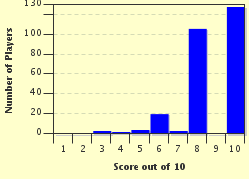
Match the Money Trivia Quiz
Just match the correct currency to the country that uses it. It's as easy as that. Although some of the answers may not be that easy!
A matching quiz
by daver852.
Estimated time: 3 mins.
- Home
- »
- Quizzes
- »
- World Trivia
- »
- Currencies
